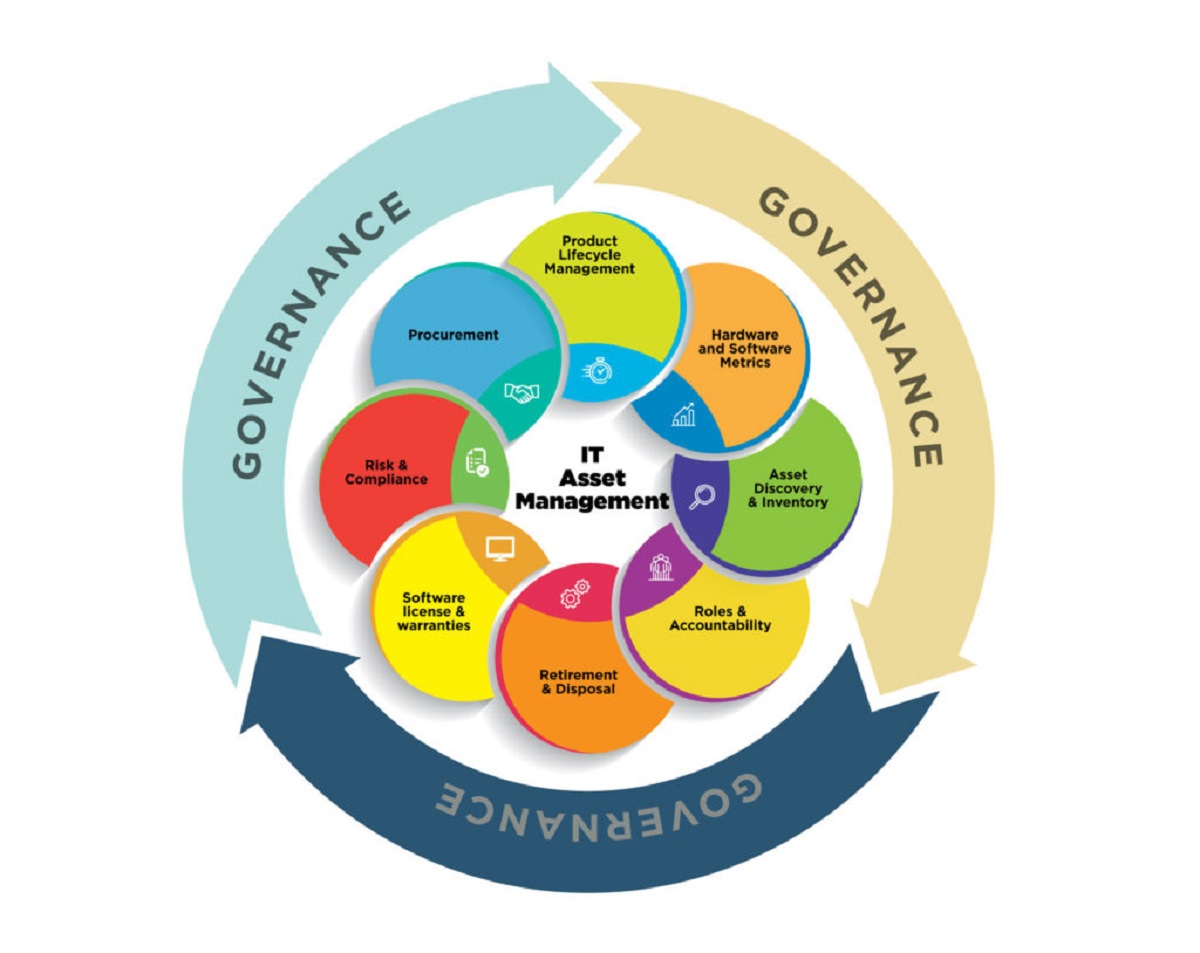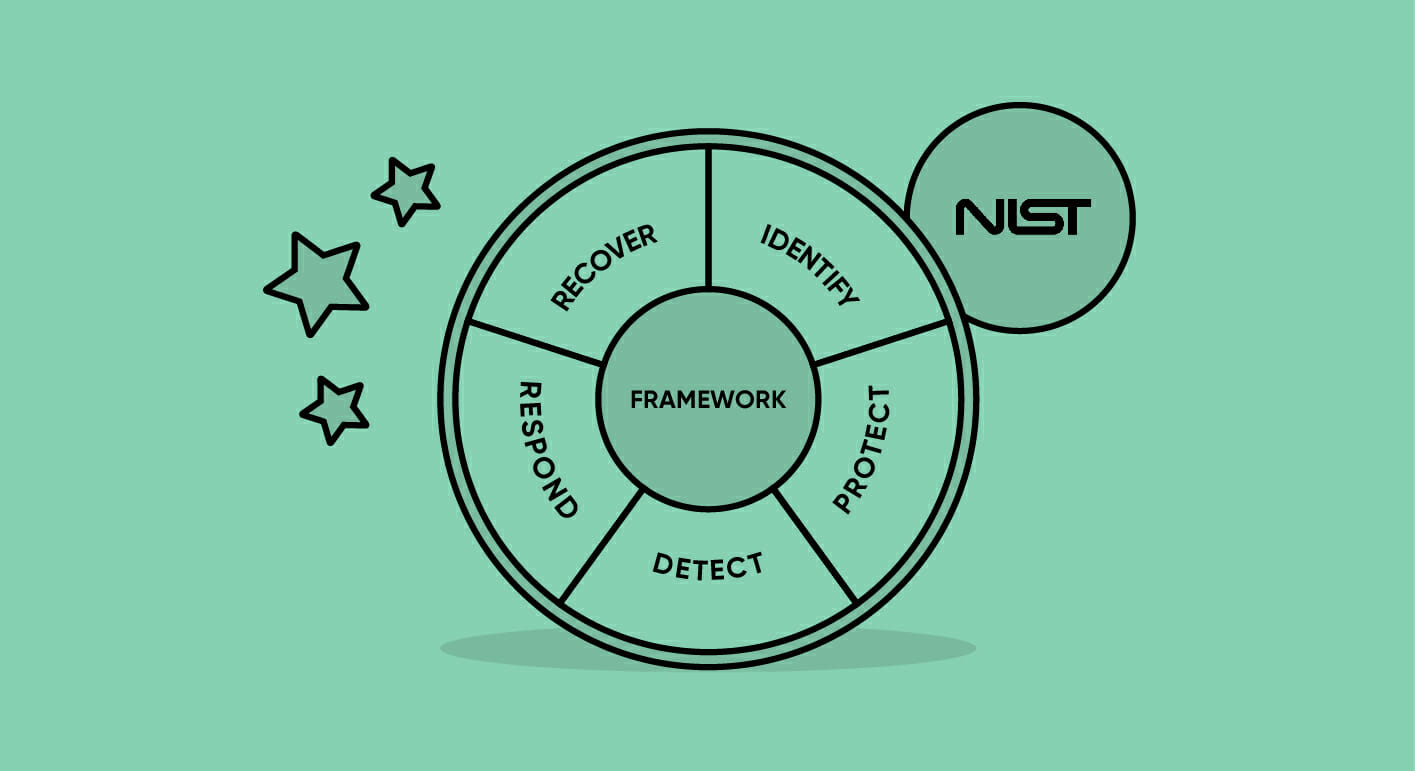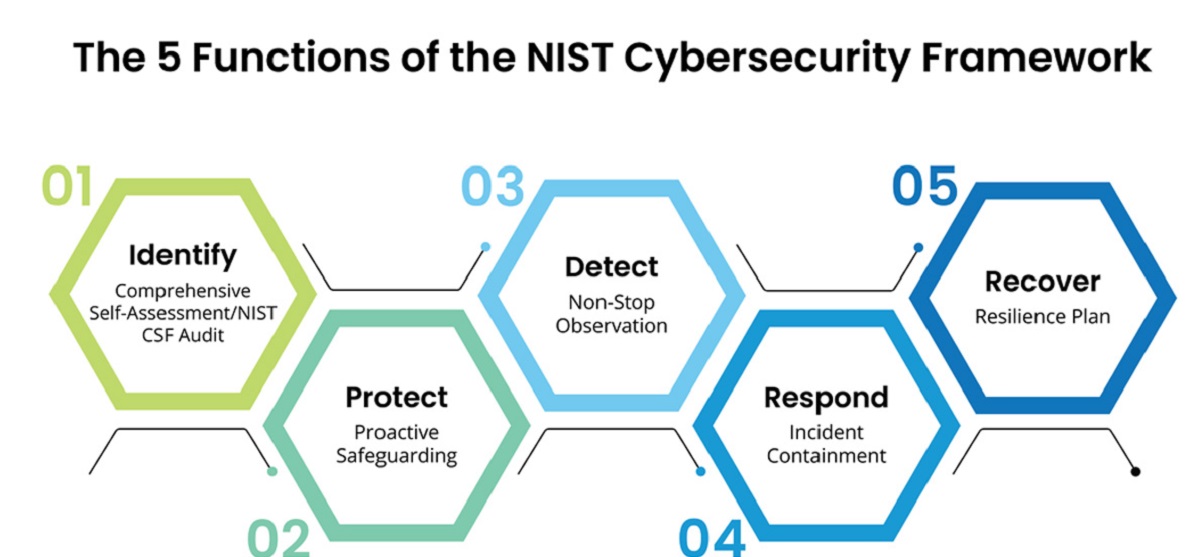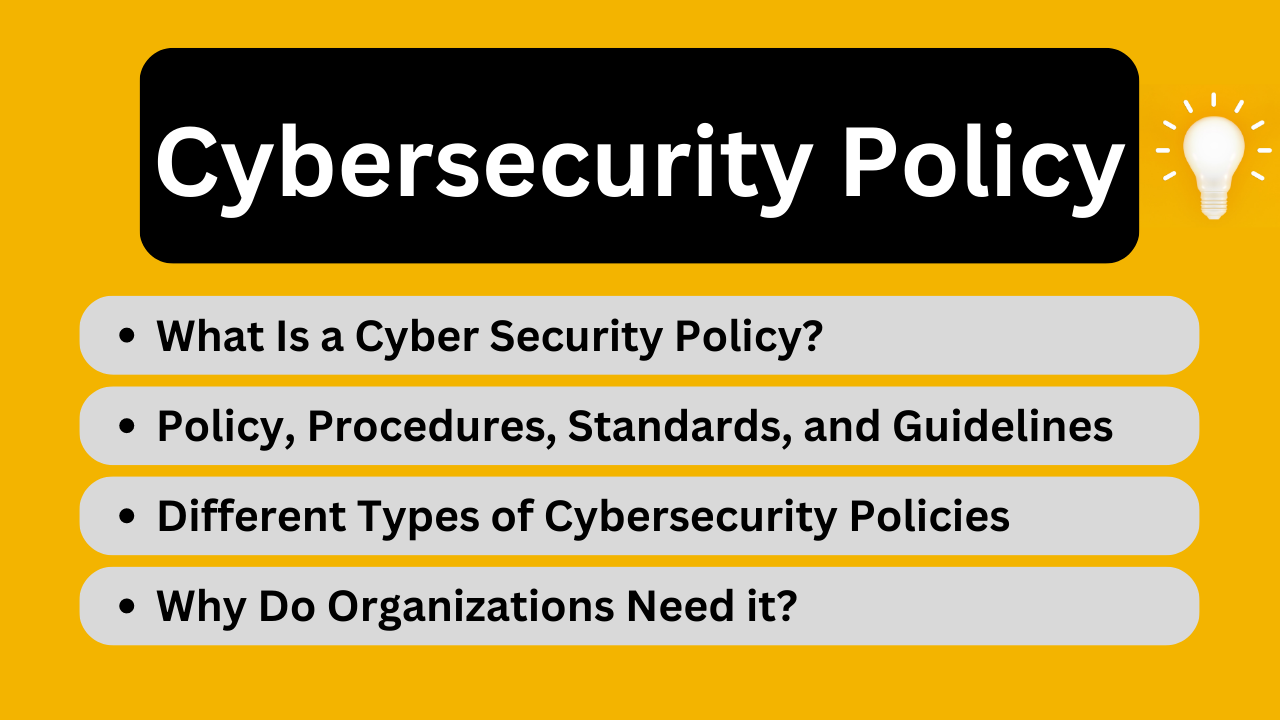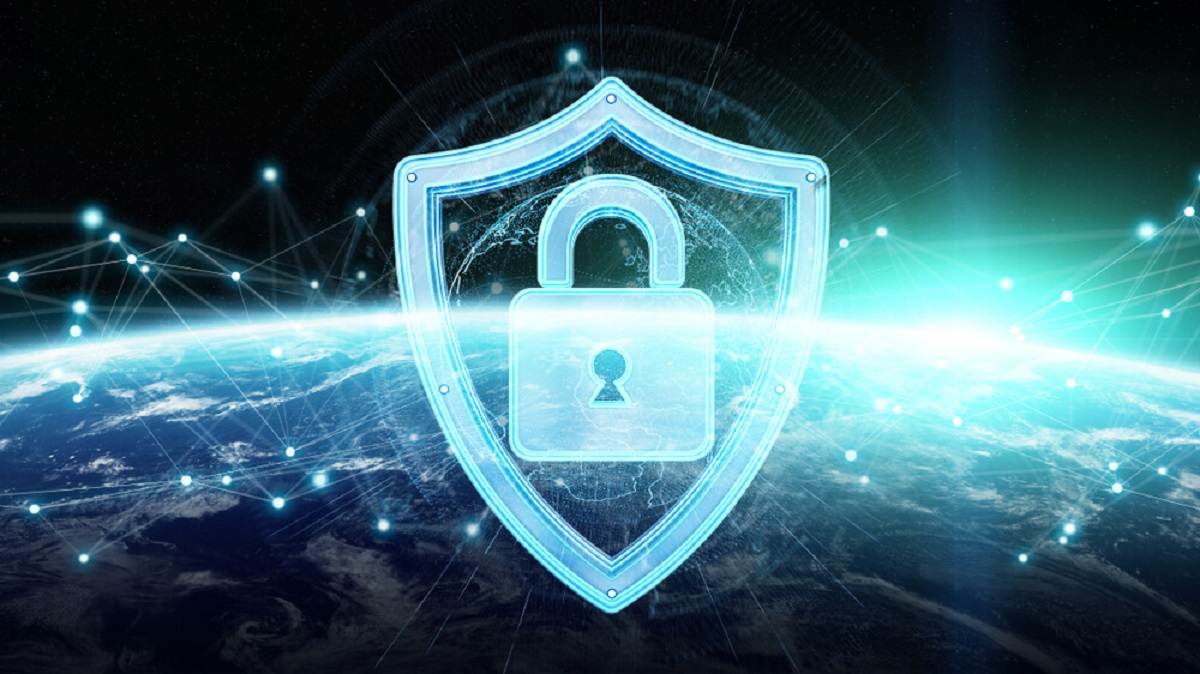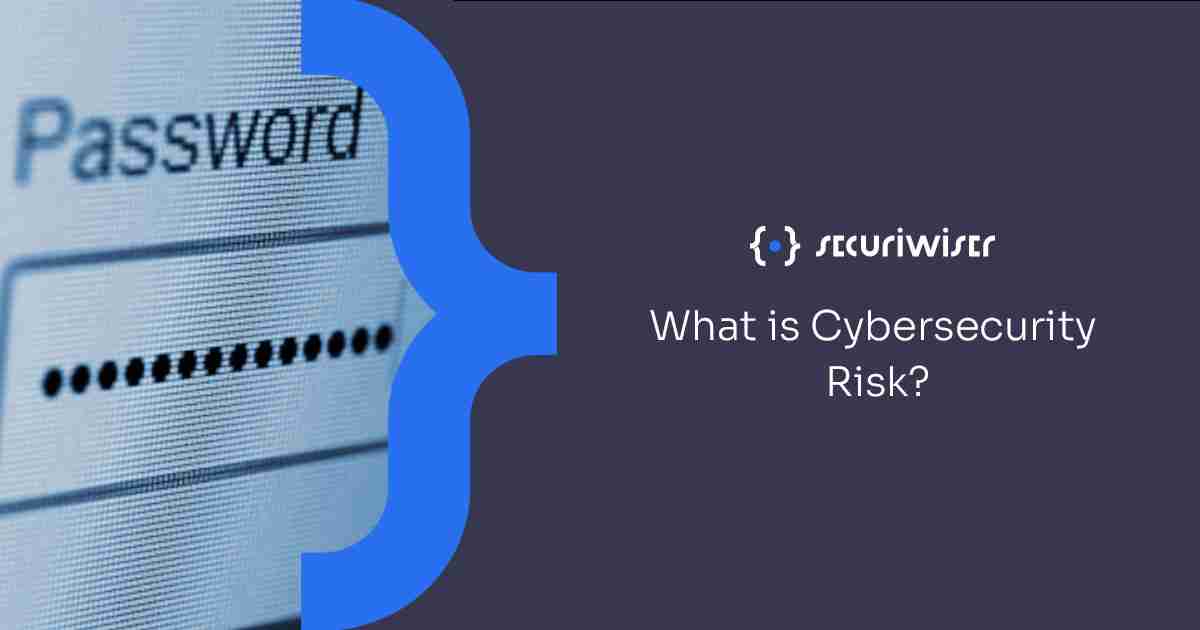Introduction
Cybersecurity is an ever-growing concern in today’s digital landscape. With the rising number of cyber threats and attacks, organizations must prioritize the security of their digital assets. One crucial element of a comprehensive cybersecurity strategy is cybersecurity asset management. This practice involves identifying, categorizing, and protecting an organization’s digital assets to mitigate risks and ensure the integrity of its operations.
Cybersecurity asset management refers to the systematic approach of identifying and managing digital assets, including hardware, software, data, and networks, within an organization. It aims to maintain an accurate inventory of assets, assess their vulnerabilities, and implement appropriate security measures to safeguard them.
While cybersecurity asset management may seem like an extra burden for organizations already juggling multiple cybersecurity tasks, its importance cannot be overstated. In the face of ever-evolving cyber threats, understanding and managing an organization’s digital assets is critical for maintaining resilience and protecting sensitive information.
By implementing effective cybersecurity asset management, organizations can gain better visibility into their digital assets, identify potential vulnerabilities, and prioritize security measures accordingly. This proactive approach helps to prevent security breaches and minimize the impact of any successful attacks.
Furthermore, cybersecurity asset management plays a vital role in compliance with industry regulations and standards. Many regulatory bodies, such as the Payment Card Industry Data Security Standard (PCI DSS) and the General Data Protection Regulation (GDPR), mandate organizations to have proper asset management practices in place to ensure the protection of customer data.
In the following sections, we will explore the key components of cybersecurity asset management, the role of vulnerability management, the benefits of implementing this practice, best practices to follow, the challenges organizations may face, and the tools and technologies available to support cybersecurity asset management.
Definition of Cybersecurity Asset Management
Cybersecurity asset management is a strategic process that involves the identification, categorization, and protection of an organization’s digital assets. It aims to establish an inventory of the organization’s hardware, software, data, and networks, and implement measures to safeguard them from potential threats.
At its core, cybersecurity asset management focuses on understanding the value and importance of each digital asset and applying appropriate security controls to protect them. It goes beyond simply identifying assets; it also encompasses assessing their vulnerabilities and implementing necessary security measures to mitigate risks.
Asset management involves creating an asset inventory, which includes comprehensive documentation of all hardware, software, applications, databases, and data repositories within an organization. This inventory serves as the foundation for effective asset management, allowing organizations to gain a clear understanding of their digital landscape and assess the risks associated with each asset.
Moreover, cybersecurity asset management also involves categorizing assets based on their criticality or sensitivity. By classifying assets into different levels of importance, organizations can allocate resources effectively and prioritize security measures based on risk levels.
Another crucial component of cybersecurity asset management is maintaining accurate and up-to-date records of assets. As technologies evolve, new assets may be added, and old assets may be retired or replaced. It is essential to keep track of these changes to ensure that asset protection measures remain effective.
Overall, the goal of cybersecurity asset management is to enable organizations to have a comprehensive view of their digital assets, understand their vulnerabilities, and implement the necessary controls to protect against potential threats. By treating digital assets as valuable resources, organizations can better safeguard their operations, mitigate risks, and maintain the trust of their stakeholders.
Why is Cybersecurity Asset Management important?
Cybersecurity asset management is of paramount importance in today’s digital landscape due to several compelling reasons. Let’s explore why this practice is crucial for organizations:
1. Risk mitigation: Cybersecurity asset management plays a crucial role in identifying and mitigating potential risks. By having a clear inventory of digital assets and understanding their vulnerabilities, organizations can implement appropriate security controls to reduce the risk of cyber attacks and data breaches. The ability to prioritize security measures based on asset criticality further strengthens an organization’s defense against threats.
2. Compliance requirements: Many industries have regulatory requirements that mandate proper cybersecurity asset management practices. Organizations that process customer data or handle sensitive information must adhere to industry regulations such as the General Data Protection Regulation (GDPR) or the Health Insurance Portability and Accountability Act (HIPAA). Failure to comply with these regulations can result in severe penalties and reputational damage.
3. Improved incident response: Effective cybersecurity asset management enables quicker incident response. By having an up-to-date asset inventory and understanding the importance of each asset, organizations can swiftly identify and prioritize their response to potential threats. This allows for faster containment and mitigation of cyber attacks, limiting their impact on operations.
4. Optimal resource allocation: Cybersecurity asset management helps organizations allocate their resources effectively. By categorizing assets based on criticality and risk, organizations can determine where to focus their time, budget, and expertise to ensure maximum protection. This strategic resource allocation enhances overall cybersecurity posture and ensures that resources are used efficiently.
5. Vendor and supply chain risk management: Understanding digital assets is not limited to internal systems and networks. Cybersecurity asset management also extends to third-party vendors and supply chains. By identifying and assessing the security posture of external assets and systems, organizations can proactively manage vendor risks and ensure the security of their interconnected ecosystem.
6. Business continuity: Effective cybersecurity asset management is crucial for maintaining business continuity. By identifying critical assets, organizations can implement robust backup and recovery strategies to ensure the availability and resilience of their operations. This proactive approach minimizes downtime and reduces financial losses associated with cyber incidents.
In summary, cybersecurity asset management is essential for identifying and managing the risks associated with digital assets, ensuring compliance with regulations, improving incident response capabilities, optimizing resource allocation, mitigating vendor risks, and ensuring business continuity. By implementing this practice, organizations can enhance their overall cybersecurity posture and protect their most valuable assets from the evolving threat landscape.
Key Components of Cybersecurity Asset Management
Cybersecurity asset management comprises several key components that work together to effectively identify, categorize, and protect an organization’s digital assets. Let’s explore these components:
1. Asset Identification: The first step in cybersecurity asset management is identifying and documenting all digital assets within an organization. This includes hardware devices, software applications, data repositories, networks, and cloud services. Organizations must maintain an accurate asset inventory that records essential details such as asset type, location, owner, and criticality.
2. Asset Categorization: Once assets are identified, they need to be categorized based on their criticality, sensitivity, and potential impact on business operations. This categorization helps prioritize security measures based on the level of risk associated with each asset. Critical assets that are integral to business operations or contain sensitive information require enhanced protection.
3. Risk Assessment: Conducting a thorough risk assessment is crucial for cybersecurity asset management. This involves evaluating the vulnerabilities and potential threats to each asset. Risk assessments can be performed through various methods, such as vulnerability scanning, penetration testing, and auditing. The results of these assessments help organizations identify and prioritize security controls and mitigation strategies.
4. Security Controls: Implementing appropriate security controls is essential to protect digital assets. Security controls can include measures such as access controls, encryption, network segmentation, intrusion detection and prevention systems, and security awareness training. These controls should be tailored to the specific needs and risks associated with each asset category.
5. Asset Monitoring: Continuously monitoring assets is a critical component of cybersecurity asset management. This involves regular scans for vulnerabilities, monitoring network traffic for anomalous activities, and tracking asset usage and access. Monitoring allows organizations to detect and respond to potential threats in real-time, ensuring the integrity and availability of assets.
6. Incident Response: Having an effective incident response plan is crucial for addressing security incidents that may impact digital assets. This plan should include predefined steps to handle incidents, roles and responsibilities of team members, communication protocols, and recovery strategies. Regular testing and updating of the incident response plan ensures its effectiveness when incidents occur.
7. Lifecycle Management: Cybersecurity asset management extends to the entire lifecycle of digital assets. This includes asset acquisition, deployment, maintenance, and retirement. Organizations must have policies and procedures in place to ensure secure asset disposal and proper transfer of assets when they reach the end of their lifecycle.
In summary, to effectively manage cybersecurity assets, organizations must focus on components such as asset identification, categorization, risk assessment, security controls, asset monitoring, incident response, and lifecycle management. By implementing these components, organizations can establish a robust cybersecurity asset management framework that strengthens their overall security posture and protects their valuable digital assets.
The Role of Vulnerability Management in Cybersecurity Asset Management
Vulnerability management plays a crucial role in cybersecurity asset management by helping organizations identify, assess, prioritize, and mitigate vulnerabilities within their digital assets. Let’s explore the importance of vulnerability management in cybersecurity asset management:
1. Identification of Vulnerabilities: One of the primary roles of vulnerability management is to identify vulnerabilities within digital assets. This includes vulnerabilities within operating systems, software applications, network devices, and other components. Regular vulnerability scanning and assessments help organizations stay aware of potential weaknesses that could be exploited by cybercriminals.
2. Risk Assessment: Once vulnerabilities are identified, vulnerability management facilitates the assessment of their potential impact and risk to digital assets. This involves evaluating the likelihood of exploitation and the potential consequences of an attack. By understanding the risks associated with each vulnerability, organizations can prioritize their response and allocation of resources.
3. Prioritization of Remediation: Vulnerability management helps organizations prioritize the remediation of vulnerabilities based on their severity and potential impact on digital assets. This allows organizations to allocate resources efficiently and focus on addressing high-risk vulnerabilities first. By prioritizing remediation efforts, organizations can reduce the window of opportunity for potential attackers.
4. Patch Management: Vulnerability management plays a crucial role in patch management, which involves applying software updates and patches to address known vulnerabilities. With a proactive approach to patch management, organizations can stay ahead of potential threats and minimize the risk of exploitation. Regular monitoring and updating of software vulnerabilities are essential to maintain the integrity and security of digital assets.
5. Compliance Requirements: Vulnerability management is essential for complying with industry regulations and standards. Many regulatory frameworks, such as the Payment Card Industry Data Security Standard (PCI DSS) and the Health Insurance Portability and Accountability Act (HIPAA), require organizations to perform regular vulnerability assessments and remediation activities. By implementing vulnerability management practices, organizations can meet these compliance requirements and protect customer data.
6. Continuous Monitoring: Vulnerability management involves continuous monitoring of vulnerabilities and potential threats to digital assets. Organizations should utilize security tools and technologies to detect new vulnerabilities as they emerge and assess their impact on assets. This ongoing monitoring helps organizations stay proactive in identifying and mitigating potential risks to their digital assets.
7. Collaboration with Security Teams: Vulnerability management facilitates collaboration between cybersecurity professionals and internal teams responsible for managing digital assets. By working together, organizations can align vulnerability management practices with overall cybersecurity goals and ensure that necessary safeguards are in place to protect critical assets. This collaborative approach enhances organizational security resilience.
In summary, vulnerability management is a critical component of cybersecurity asset management. By identifying vulnerabilities, assessing risks, prioritizing remediation efforts, managing patches, meeting compliance requirements, continuously monitoring for emerging threats, and collaborating with security teams, organizations can effectively mitigate vulnerabilities and protect their digital assets from potential exploitation.
Benefits of Implementing Cybersecurity Asset Management
Implementing cybersecurity asset management offers numerous benefits for organizations in safeguarding their digital assets and maintaining a strong security posture. Let’s explore some of the key benefits:
1. Enhanced Security: One of the primary benefits of implementing cybersecurity asset management is an enhanced level of security. By accurately identifying, categorizing, and prioritizing digital assets, organizations can implement appropriate security controls and measures. This proactive approach helps protect against potential threats and vulnerabilities, reducing the risk of data breaches and cyber attacks.
2. Effective Risk Management: Cybersecurity asset management enables organizations to effectively manage risks associated with their digital assets. By conducting risk assessments, identifying vulnerabilities, and prioritizing mitigation efforts, organizations can allocate resources and implement controls based on the level of risk each asset poses. This approach allows for targeted risk management and reduced exposure to potential threats.
3. Improved Compliance: Implementing cybersecurity asset management practices helps organizations meet regulatory compliance requirements. Many industry-specific regulations, such as the General Data Protection Regulation (GDPR) and the Health Insurance Portability and Accountability Act (HIPAA), mandate proper asset management practices. By adhering to these requirements, organizations can avoid legal penalties, reputational damage, and loss of customer trust.
4. Efficient Resource Allocation: Cybersecurity asset management enables organizations to allocate resources efficiently. By categorizing assets based on their criticality and risk, organizations can prioritize their efforts and investments. This targeted resource allocation ensures that security measures are focused on the most essential assets, optimizing the use of time, budget, and expertise.
5. Improved Incident Response: Having a robust cybersecurity asset management system in place helps organizations respond effectively to security incidents. By maintaining an accurate asset inventory, organizations can swiftly identify compromised assets, assess the extent of the breach, and implement appropriate measures to contain and mitigate the incident. This rapid response minimizes the impact of security breaches and reduces downtime.
6. Better Vendor Management: Cybersecurity asset management extends to third-party vendors and suppliers, enabling organizations to effectively manage vendor risk. By assessing the security posture of vendors and including them in the asset management process, organizations can ensure that the entire ecosystem is protected. This approach mitigates risks associated with shared data, systems, and networks.
7. Business Continuity: Implementing cybersecurity asset management practices contributes to maintaining business continuity. By identifying critical assets and implementing appropriate backup and recovery strategies, organizations can ensure resilience in the face of cyber incidents. This proactive approach minimizes the disruption of business operations and reduces financial losses associated with downtime.
In summary, implementing cybersecurity asset management provides organizations with enhanced security, effective risk management, improved compliance, efficient resource allocation, improved incident response capabilities, better vendor management, and business continuity. By prioritizing the protection of digital assets, organizations can mitigate risks, protect sensitive information, and maintain the trust of stakeholders.
Best Practices for Cybersecurity Asset Management
Implementing best practices for cybersecurity asset management is crucial for organizations to effectively protect their digital assets and mitigate potential risks. Here are some key best practices to consider:
1. Develop and Maintain an Accurate Asset Inventory: Create a comprehensive inventory of all digital assets, including hardware, software, data repositories, and networks. Regularly update and maintain this inventory as new assets are added or retired.
2. Categorize Assets Based on Criticality: Categorize assets based on their importance and potential impact on business operations. This allows for prioritized allocation of resources and security measures to protect the most critical assets.
3. Conduct Regular Risk Assessments: Perform routine risk assessments to identify vulnerabilities and weaknesses within assets. This involves vulnerability scanning, penetration testing, and audits. Use the results to prioritize security measures and mitigate identified risks.
4. Implement Strong Access Controls: Enforce strict access controls by utilizing mechanisms such as strong passwords, multi-factor authentication, and role-based access control (RBAC) to ensure that only authorized personnel can access sensitive assets.
5. Implement Patch Management: Establish a process for timely and regular patching of software and systems to address known vulnerabilities. Create a patch management strategy that includes testing patches before deployment to minimize disruptions.
6. Regularly Monitor and Update Security Controls: Continuously monitor and update security controls, including firewalls, intrusion detection and prevention systems, and antivirus software. Stay informed about emerging threats and adjust security controls accordingly.
7. Educate Employees on Security Awareness: Provide comprehensive security awareness training to all employees to ensure they understand their roles and responsibilities in protecting digital assets. Create a culture of cybersecurity awareness and encourage reporting of potential security incidents.
8. Establish an Incident Response Plan: Develop an incident response plan that outlines predefined steps to be taken in the event of a security breach. Clearly define roles and responsibilities, establish communication channels, and regularly test and update the plan.
9. Regularly Audit and Assess Third-Party Vendors: Implement a robust vendor management process that includes evaluating the security practices of third-party vendors. Regularly audit and assess their security controls to ensure they align with your organization’s cybersecurity standards.
10. Stay Informed About Emerging Threats and Technology: Keep up to date with the latest cybersecurity trends, threats, and technologies. Stay informed through participation in industry forums, attending conferences, and partnering with cybersecurity experts to enhance your organization’s security practices.
Incorporating these best practices into your cybersecurity asset management strategy helps organizations build a strong foundation for protecting their digital assets. By prioritizing asset inventory, risk assessments, access controls, patch management, security awareness, incident response planning, vendor management, and staying informed, organizations can enhance their overall cybersecurity posture and effectively safeguard their valuable digital assets.
Challenges in Cybersecurity Asset Management
While cybersecurity asset management is crucial for protecting digital assets, organizations often face several challenges when implementing and maintaining effective asset management practices. Here are some common challenges:
1. Asset Discovery: One of the primary challenges is accurately identifying and discovering all digital assets within an organization. With the increasing complexity of IT infrastructures and the rapid adoption of cloud services, organizations struggle to maintain visibility into all assets and their interconnectedness.
2. Lack of Asset Inventory: Organizations often struggle to maintain an up-to-date and comprehensive asset inventory. Assets may be added or removed, and outdated or unsupported systems may remain unnoticed, creating security gaps. This lack of inventory makes it challenging to assess risks and implement appropriate security controls.
3. Asset Classification: Properly categorizing assets based on their criticality and sensitivity is another challenge. Determining which assets are the most critical and require priority protection can be subjective and time-consuming. Inconsistent asset classification can lead to resource misallocation and gaps in security coverage.
4. Legacy Systems and Technical Debt: Many organizations face the challenge of managing legacy systems and technical debt. Older systems may lack vendor support and security updates, making them vulnerable to attacks. Maintaining and securing these systems can be resource-intensive and complex.
5. Third-party Dependencies: Organizations often rely on third-party vendors and suppliers for various services, making it challenging to assess and manage the security of these external assets. Lack of visibility into the security practices of vendors and ensuring their adherence to security standards pose risks to the overall asset management framework.
6. Continuous Monitoring and Updates: The ever-changing threat landscape and technology advancements require organizations to continuously monitor and update security controls. However, this can be challenging due to resource constraints, time limitations, and the need for specialized expertise to identify and mitigate emerging threats effectively.
7. Budget Constraints: Adequate investment in cybersecurity asset management is crucial, but organizations often face budgetary constraints. Allocating sufficient resources to maintain an effective asset management program, including security tools, technologies, and skilled personnel, can be a challenge.
8. Lack of Employee Awareness: Employee awareness and adherence to security practices can be inconsistent, posing a challenge for effective asset management. Without a strong security culture and ongoing training programs, employees may unknowingly engage in risky behaviors, such as weak password management or falling victim to phishing attacks.
9. Regulatory Compliance: Meeting regulatory compliance requirements can be challenging, particularly with the evolving landscape of industry regulations. Organizations must stay updated with the latest compliance standards and ensure their asset management practices align with these requirements.
10. Scalability and Complexity: As organizations grow and technology landscapes evolve, managing assets at scale and adapting asset management practices to evolving complexities becomes challenging. The challenge lies in maintaining asset visibility, risk assessments, and control measures as the organization expands.
In addressing these challenges, organizations can deploy robust processes, leverage technology solutions, invest in employee training, establish strong vendor management programs, and ensure ongoing assessment and improvement of their cybersecurity asset management practices.
Tools and Technologies for Cybersecurity Asset Management
To effectively manage and protect digital assets, organizations can leverage various tools and technologies specifically designed for cybersecurity asset management. Here are some common tools and technologies:
1. Asset Discovery and Inventory Tools: Asset discovery tools help organizations identify and maintain an accurate inventory of digital assets. These tools can automatically scan networks, cloud environments, and connected devices to discover assets and collect essential information such as IP addresses, operating systems, and software versions.
2. Vulnerability Scanning and Assessment Tools: Vulnerability scanning tools detect and assess vulnerabilities within digital assets. These tools can identify known vulnerabilities, misconfigurations, and weak security practices, providing organizations with insights into potential risks and vulnerabilities that need to be addressed.
3. Patch and Configuration Management Tools: Patch management tools assist in managing software updates and patches for digital assets. These tools automate the process of deploying patches, ensuring that systems and applications are up to date with the latest security fixes. Configuration management tools help maintain consistent and secure configurations across assets.
4. Security Information and Event Management (SIEM) Systems: SIEM systems collect, analyze, and correlate security event logs from various sources within an organization’s IT infrastructure. By centralizing logs and providing real-time monitoring and analysis, SIEM systems help organizations detect and respond to security incidents affecting their digital assets.
5. Identity and Access Management (IAM) Solutions: IAM solutions enable organizations to manage user access to digital assets. These solutions provide capabilities for authentication, authorization, and access control, ensuring that only authorized individuals can access sensitive assets. They also facilitate user provisioning and deprovisioning to manage access as employees join or leave the organization.
6. Encryption and Data Loss Prevention (DLP) Solutions: Encryption solutions help protect sensitive data by converting it into unreadable format, which can only be decrypted with the proper encryption key. DLP solutions monitor and prevent the unauthorized transmission or sharing of sensitive data, ensuring compliance with data protection regulations.
7. Configuration Audit and Compliance Tools: Configuration audit tools help organizations ensure that digital assets are configured securely and in compliance with industry standards and organizational policies. These tools scan and assess asset configurations, comparing them against established security baselines and highlighting deviations or vulnerabilities.
8. Risk and Compliance Management Platforms: Risk and compliance management platforms provide organizations with a comprehensive view of their digital assets’ security posture. These platforms help organizations assess risks, manage compliance requirements, and prioritize security tasks based on asset criticality and potential impact.
9. Threat Intelligence Services: Threat intelligence services provide organizations with up-to-date information on emerging threats, attack patterns, and vulnerabilities. By subscribing to threat intelligence feeds, organizations can stay informed about potential risks to their digital assets and take proactive security measures.
10. Security Training and Awareness Platforms: Security training and awareness platforms offer organizations tools and resources to educate employees on cybersecurity best practices. These platforms provide training modules, simulated phishing campaigns, and security awareness materials to enhance employees’ knowledge and vigilance in protecting digital assets.
It is essential for organizations to select tools and technologies that align with their specific needs, budgets, and security requirements. Integration and automation of these tools can improve the efficiency and effectiveness of cybersecurity asset management practices, allowing organizations to better protect their digital assets from evolving security threats.
Conclusion
Cybersecurity asset management is a critical practice for organizations to safeguard their digital assets and protect against potential threats and vulnerabilities. By implementing effective asset management strategies, organizations can gain better visibility into their assets, assess risks, mitigate vulnerabilities, and ensure compliance with industry regulations.
This comprehensive approach involves various key components, including asset identification, categorization, risk assessment, security controls, asset monitoring, incident response planning, and lifecycle management. By addressing these components, organizations can establish a strong foundation for managing and protecting their digital assets.
Implementing cybersecurity asset management offers several benefits to organizations. It enhances security, enables effective risk management, ensures compliance with regulations, optimizes resource allocation, improves incident response capabilities, strengthens vendor management practices, and contributes to business continuity.
However, organizations may face challenges in implementing cybersecurity asset management, such as asset discovery, lack of asset inventory, asset classification, legacy systems, third-party dependencies, continuous monitoring and updates, budget constraints, lack of employee awareness, and scalability and complexity.
To overcome these challenges, organizations can leverage a range of tools and technologies specifically designed for cybersecurity asset management. These tools include asset discovery and inventory tools, vulnerability scanning and assessment tools, patch and configuration management tools, SIEM systems, IAM solutions, encryption and DLP solutions, configuration audit and compliance tools, risk and compliance management platforms, threat intelligence services, and security training and awareness platforms.
With the ever-evolving threat landscape and the increasing value of digital assets, a proactive and holistic approach to cybersecurity asset management is essential. By prioritizing the protection and management of digital assets, organizations can enhance their overall cybersecurity posture, mitigate risks, protect sensitive information, and ensure the trust of stakeholders.
By implementing and continuously refining cybersecurity asset management practices, organizations are better equipped to face the ever-growing cyber threats and safeguard their valuable digital assets now and in the future.







